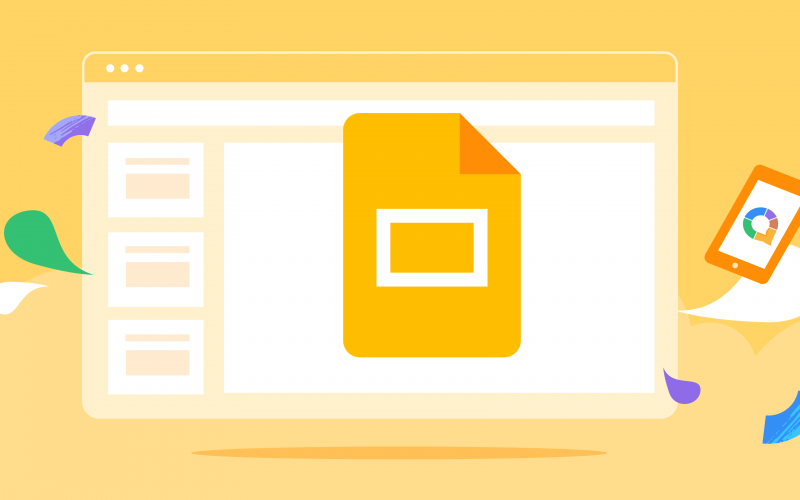Google Slides is a web-based presentation application offered by Google. It allows users to create, edit, and deliver presentations online. Here’s some more information about creating, editing, and delivering presentations in Google Slides:
Creating a Presentation:
- To start a new presentation, go to the Google Slides website (slides.google.com) and sign in to your Google account.
- Click on the “+ Blank” button, or go to “File” > “New” > “Presentation” to create a new blank presentation.
Editing a Presentation:
- Once you have a presentation open, you can start adding slides and editing their content.
- Use the toolbar at the top of the page to access various editing options, such as adding text, shapes, images, videos, and more.
- Customize the layout, background, and theme of your slides using the options available in the “Slide” and “Format” menus.
Slide Transitions and Animations:
- Google Slides allows you to add slide transitions and animations to make your presentation more dynamic and engaging.
- Apply slide transitions to control how each slide appears and exits during the presentation. Access transition options from the “Slide” menu or the toolbar.
- Add animations to individual elements within a slide, such as text or images, to make them appear or move in a specific way. Access animation options from the “Format” menu or the toolbar.
Collaboration:
- Similar to other Google apps, Google Slides supports real-time collaboration, allowing multiple users to work on a presentation simultaneously.
- Click on the “Share” button in the top-right corner to invite collaborators. You can specify their access level (view, comment, or edit) and collaborate in real-time.
Presenting a Slideshow:
- When you’re ready to present your slideshow, click on the “Present” button in the top-right corner.
- Google Slides provides several presentation modes:
- “Present” mode displays the presentation in full screen, and you can navigate through slides using arrow keys or on-screen controls.
- “Presenter View” mode shows the presenter’s screen with speaker notes and a timer, while the audience sees the full-screen presentation.
- “Q&A” mode allows the audience to ask and vote on questions during the presentation.
Sharing and Publishing:
- You can share your presentation with others by clicking on the “Share” button in the top-right corner.
- By default, you can share the presentation as a link with specific permissions. You can also publish the presentation to the web for broader access.
Importing and Exporting:
- Google Slides allows you to import PowerPoint files and other presentation formats.
- You can also export your Google Slides presentation as a PowerPoint file, PDF, or other formats.
Google Slides offers additional features such as speaker notes, revision history, add-ons, and integration with other Google services like Google Drive and Google Docs. Exploring these features can enhance your presentation creation and delivery experience.
Features and tips for working with Google Slides:
- Templates:
- Google Slides offers a wide range of pre-designed presentation templates that you can use as a starting point for your own slideshows.
- To access templates, go to “File” > “New” > “From template” and choose a template that suits your needs. You can customize the template to fit your content.
- Collaboration Tools:
- Real-time Collaboration: Invite others to collaborate on your presentation by clicking on the “Share” button. Collaborators can edit the slides simultaneously, and changes are synced in real-time.
- Comments: Add comments to specific slides or elements within slides to provide feedback or discuss ideas with collaborators. Use the comment button in the toolbar or right-click on selected elements.
- Design and Formatting:
- Custom Themes: Customize the appearance of your presentation by creating or applying custom themes. Modify the background, font styles, colors, and more to match your desired look.
- Master Slides: Use the master slides feature to set consistent formatting and design elements for the entire presentation. Changes made to the master slide will be applied to all slides using that master.
- Alignment Guides: Enable alignment guides from the “View” menu to ensure that elements on your slides are properly aligned with each other.
- Multimedia and Interactivity:
- Media Insertion: Google Slides allows you to add various types of media to your presentation, including images, videos, audio, and even animated GIFs. Use the “Insert” menu to add multimedia elements.
- Hyperlinks: Insert hyperlinks to external websites or other slides within your presentation. This can help you navigate to different sections or provide additional resources for your audience.
- Presenting and Audience Interaction:
- Presenter View: Utilize the Presenter View mode to have speaker notes, a timer, and an overview of your slides on your screen while presenting. This mode helps you stay organized and on track.
- Audience Participation: Engage your audience by incorporating live polls, quizzes, and interactive questions in your presentation using third-party add-ons like Slido or Mentimeter.
- Revision History and Version Control:
- Google Slides keeps a detailed revision history of all changes made to your presentation. You can access the revision history by going to “File” > “Version history” > “See version history.” This allows you to revert to previous versions if needed.
- Export and Publishing:
- Export Options: You can export your presentation as a PowerPoint file (.pptx), PDF, or image format (.jpg, .png, .svg).
- Publishing: Publish your presentation to the web to make it accessible to a broader audience. You can choose to publish it as a standalone web page or embed it in a website.
- Add-Ons and Integration:
- Google Slides supports various add-ons that can extend its functionality. Add-ons provide additional features like image editing, diagramming, chart creation, and more.
- Google Slides integrates seamlessly with other Google services like Google Drive, Google Photos, and Google Docs. You can easily insert content from these services into your slides.
SHARE
